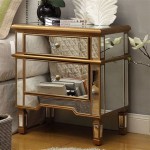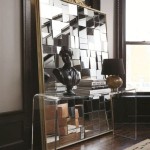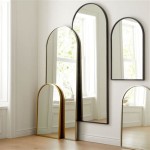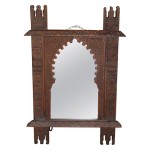Frameless Mirror Installation
Frameless mirrors offer a sleek, modern aesthetic, enhancing the perception of space and light in any room. Their minimalist design seamlessly integrates into various interior styles, from contemporary to traditional. However, the installation of a frameless mirror requires precision and attention to detail, differing significantly from framed mirror installation. This article will explore the process and considerations involved in successfully installing a frameless mirror.
Before beginning the installation process, accurate measurements are crucial. The dimensions of the mirror should precisely match the prepared wall space. Even slight discrepancies can lead to uneven gaps or instability. Using a quality measuring tape and double-checking measurements is vital for a successful outcome. Additionally, the wall surface must be thoroughly examined. It should be clean, dry, and free of any imperfections, such as bumps or loose paint, which could interfere with proper adhesion.
Choosing the right adhesive is paramount for secure and long-lasting installation. Mirror mastic, a specialized adhesive designed for heavy objects like mirrors, is often recommended. This adhesive provides a strong bond and allows for minor adjustments during placement. Construction adhesive can also be used, though ensuring compatibility with the mirror backing is essential. Avoid using general-purpose glues or silicone sealants, as these may not provide sufficient strength or could damage the mirror's silvering over time.
Preparing the wall surface is the next critical step. The area where the mirror will be installed should be cleaned with a mild detergent and thoroughly dried. For textured walls, applying a thin layer of drywall compound can create a smooth, even surface for optimal adhesion. This step ensures the adhesive makes full contact with the wall, maximizing its bonding strength. Marking the mirror's outline on the wall using a level and pencil provides a precise guide for placement.
Applying the adhesive requires careful technique. For mirror mastic, applying the adhesive in vertical beads, spaced several inches apart, ensures even distribution and prevents excessive buildup. For construction adhesive, following the manufacturer's instructions for application is essential. Avoid applying adhesive too close to the mirror's edges, as this can squeeze out and create a messy finish. Some installers recommend applying small dabs of adhesive to the back of the mirror in addition to the wall application for added security, particularly for larger mirrors.
Positioning the mirror on the wall requires a steady hand and careful alignment. Once the mirror is in contact with the adhesive, it can be challenging to reposition. Using suction cups can assist in maneuvering the mirror into the correct position. Gently pressing the mirror against the wall ensures full contact with the adhesive. A level can be used to verify proper alignment during this stage. Supporting the mirror with temporary bracing, especially for larger or heavier mirrors, is recommended until the adhesive fully cures.
Curing time is a critical factor in the installation process. Allowing the adhesive to cure completely, as specified by the manufacturer's instructions, is essential for achieving maximum bond strength. Avoid disturbing the mirror during this period. Premature stress on the bond can weaken the adhesion and lead to instability. Once the adhesive has cured, the temporary bracing can be removed.
Safety precautions should be observed throughout the installation process. Wearing gloves protects hands from the adhesive and any sharp edges on the mirror. Eye protection is also recommended, as small glass fragments can occasionally dislodge during handling. Having a second person assist with larger or heavier mirrors provides added stability and control during positioning, minimizing the risk of accidents.
Dealing with imperfections is sometimes necessary. Small gaps between the mirror and the wall can be filled with a neutral-cure silicone sealant, providing a clean, finished appearance. Choose a sealant specifically designed for use with mirrors to prevent damage to the silvering. Applying the sealant with a caulking gun and smoothing the bead with a damp finger creates a professional finish.
Maintaining the newly installed frameless mirror involves regular cleaning with a glass cleaner and a soft cloth. Avoid using abrasive cleaners or harsh chemicals, as these can damage the mirror's surface. Regular inspection for any signs of loosening or damage is also recommended. Addressing any issues promptly can prevent further damage and ensure the longevity of the installation. Proper installation and maintenance will ensure the frameless mirror remains a beautiful and functional element in the space for years to come.

How To Hang A Frameless Mirror On The Wall With Pictures

How To Install A Mirror Without Frame Merrypad

Oval Frameless Wall Mirror Installation Fab Glass And

How To Hang A Frameless Mirror On The Wall With Pictures

How To Install A Clipless Frameless Mirror Part 1 Keystone Home

How To Install A Mirror Without Frame Merrypad

How To Hang A Frameless Mirror On Wall

How To Hang A Frameless Mirror On Wall E Architect

Mirror Installation Without Clips

How To Install A Frameless Mirror








